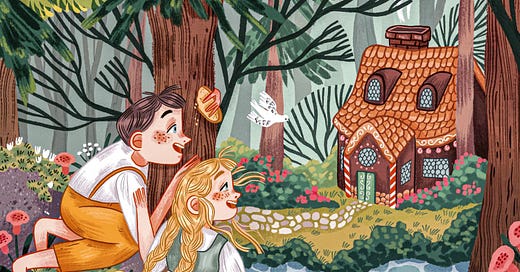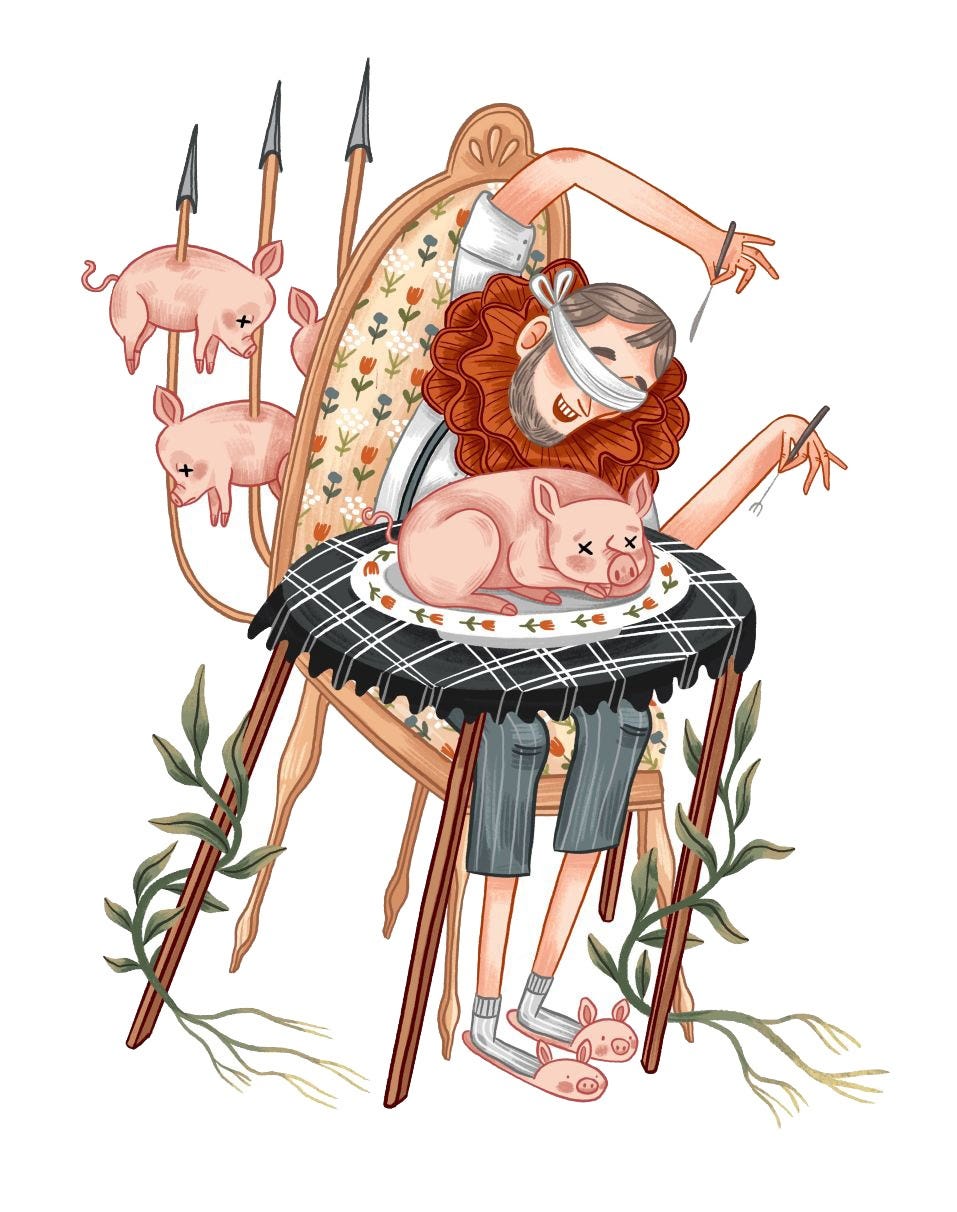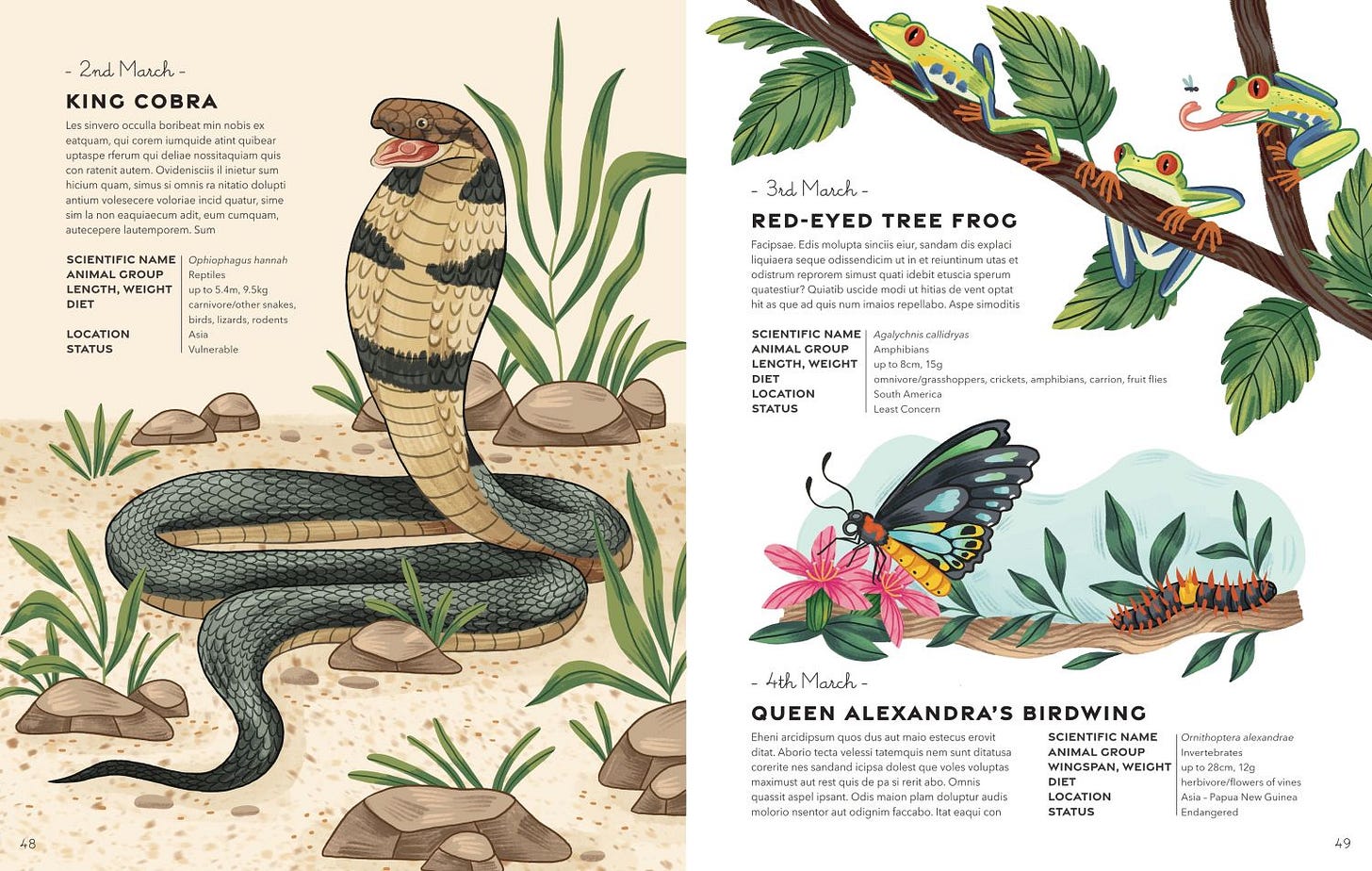Interview #38: The Art of Iz Ptica
Kaja, aka Iz Ptica, talks about her artistic process and dealing with burn out
Hello art community :)) While writing today's interview, I started to wonder about artists' names. I’ve realized that many artists tend to use their nickname rather than their real name on any art content they release. I find that very fascinating. What are your thoughts on it?
For those just finding me - I’m Madalina, an artist and illustrator who loves discovering and talking to many fellow artists. I now share these conversations through monthly interviews available to read for everyone :)
Kaja Kaifez (aka iz.ptica) is a Croatian freelance illustrator and visual storyteller known for her warm and soft illustrative style. Her love for nature and gentle characters led her naturally into the children's book industry. She has worked with many publishers, including Harper Collins, Hachette, Random house and many others. I bet you are wondering how she developed such a unique voice and career. Well, you just have to keep reading ;)
★ Hi Kaja and thank you for joining forArtists! How would you describe your artistic journey, so far?
I was born in Varaždin - a small but charming city in Croatia. I fell in love with drawing as a child - my mum used to draw with me for hours, and that really sparked my early interest in illustration. What began as playful experimentation with traditional media eventually led me to buy my first graphic tablet, which pulled me into the digital world. Since then, I’ve been working fully digitally, though I love incorporating organic textures and painterly brushstrokes into my illustrations.
My passion for art, combined with my curiosity for technology, led me to pursue a degree in Multimedia, Design and Applications at the University North in Croatia, where I focused on visual communication. During my college years, I started working as a freelancer, which eventually allowed me to establish my own illustration studio. My work revolved mainly around graphic design, lettering and surface pattern design.
Around that time, I also started posting on Instagram and focusing more intentionally on building a portfolio tailored for the children's publishing industry. In 2019, I joined Advocate Art illustration agency. Thanks to our collaboration, I’ve had the opportunity to work on projects for clients including HarperCollins, Hachette, Random House, Macmillan, and DK.
★ Can you recall the piece that represented a turning point in your artistic path?
Not one specific piece, but definitely a small personal series called "Rita is Gone". It was my first serious attempt at telling a visual story through multiple illustrations. I made it back in 2017 - I came up with the characters and the story, and then illustrated that little world. Projects like this, done for yourself, are something I’ve noticed many illustrators start with. They’re usually a way to develop new skills, refine your approach, and strengthen your portfolio - sometimes all at once.
That same year, I was already working hard on building a solid portfolio for the publishing industry, and I truly believe that self-initiated project helped me not only to improve my work, but also to mentally prepare for the kind of projects I hoped to land in the future.
★ Natural elements are a leitmotif in your artworks. How do you manage to keep them simple but still believable?
Nature is such a huge part of my creative world. I often work on non-fiction books about flora and fauna, where natural elements need to be rendered with a decent level of realism. Sometimes the client provides references, but often I’ll do my own research depending on the plant or animal I need to draw.
Then there are botanical illustrations, which usually require the highest level of accuracy and detail. And finally, there are my more personal pieces - where I interpret nature more freely, often without any references. That’s where I get the most artistic freedom.
No matter which approach I’m using, I always pay attention to the same core things: basic geometric shapes, scale and relationships between elements, texture, linework, and color. Just like with characters, natural elements can be simplified into essential forms and stylized accordingly. That’s what helps keep them readable and believable.
Treating nature like a character in your story - giving it personality through shape, color, or unique detail - is one of my favorite ways to breathe life into a piece.
★ What advice would you give to beginner artists who struggle with backgrounds in their illustrations? How do you keep it all cohesive?
I still struggle with backgrounds myself! At this point it’s almost a universal truth for illustrators, like “the sky is blue.”
What helped me the most was flipping the process around: instead of drawing the characters first, I started building the environment first and placing the characters into it. That change really shifted things for me.
Also - a good background should stand strong on its own, even without a character in sight. Try collecting references of lush forests, quiet snowy hills, or old medieval towns, and just paint those. Especially if you're already confident with your characters.
When combining characters with backgrounds, it’s important to make sure they all feel like part of the same universe. Think about scale, color temperature, light and shadow - the more these align, the more believable your scene will be.
On a more stylistic level: I tend to limit my background palette (especially if I want the character to pop), and treat the rendering of the background with as much care as I treat the character. I often hide the characters altogether while working, just to check that the background stands on its own visually.
★ Which project did you enjoy working on the most and which one did you struggle with the most?
I really loved working on a children’s book that advocates for animal rights - this topic is deeply important to me, so I felt very connected to the project. I ended up creating some of my most symbolically charged illustrations for that book, which isn’t usually my go-to approach, but it felt right.
I wouldn’t say I struggle with particular projects, but the most challenging ones are definitely those that require a higher degree of realism - that's not my forte. That means more research, more references, more time for sketching and rendering. I always gravitate towards imaginative projects with a bit more artistic freedom - that’s where I feel most alive.
★ How many art income streams do you juggle at once? What is your main focus at the moment?
Right now I have four income streams: the main one is working with publishing clients through my agency. I also license illustrations through the same agency. On top of that, I run my own Etsy store, and I sell on a few different POD platforms. So it’s a bit of a mix - but client work remains my core focus.
★ Have you ever experienced burn out after a big project? How have you dealt with it?
Yes - and to be honest, I’m still in the middle of one. My motivation is very low, and most days I’d rather do anything but draw. So I’ve been intentionally spending more time doing things unrelated to illustration: reading, gardening, learning new skills (like skating, embroidery, and clay), and hanging out with loved ones.
I’m still working, but my focus is no longer just on my career. I’ve become more selective with the projects I take on, and I’m quicker to say no to bad deals. Like with most burnouts, it came fast and it’s taking time to recover - so I’m just taking it day by day.
★ I’m really sorry to hear that you’re going through a burn out. I hope it will go by faster than it may seem. Other than drawing, what would you like to accomplish by the end of the year?
I’d love to finish the book I’m writing. Writing has always been a passion of mine, right next to drawing. At the moment I’m enjoying the process, experimenting, playing - and if it turns into something real by the end of the year, I’ll be very proud.
★ One last question, what do people not know about you, the person behind the art?
People often assume I’m constantly inspired or that drawing comes easy to me - but in reality, I often feel lost, anxious, or disconnected from my work. Art is a love, but also a struggle. What keeps me going is curiosity - and the belief that I can still be surprised by what I make.
☆☆ Learn more about Kaja's work on her website and Instagram. And if you want to buy her art prints you can also visit her Etsy shop.












